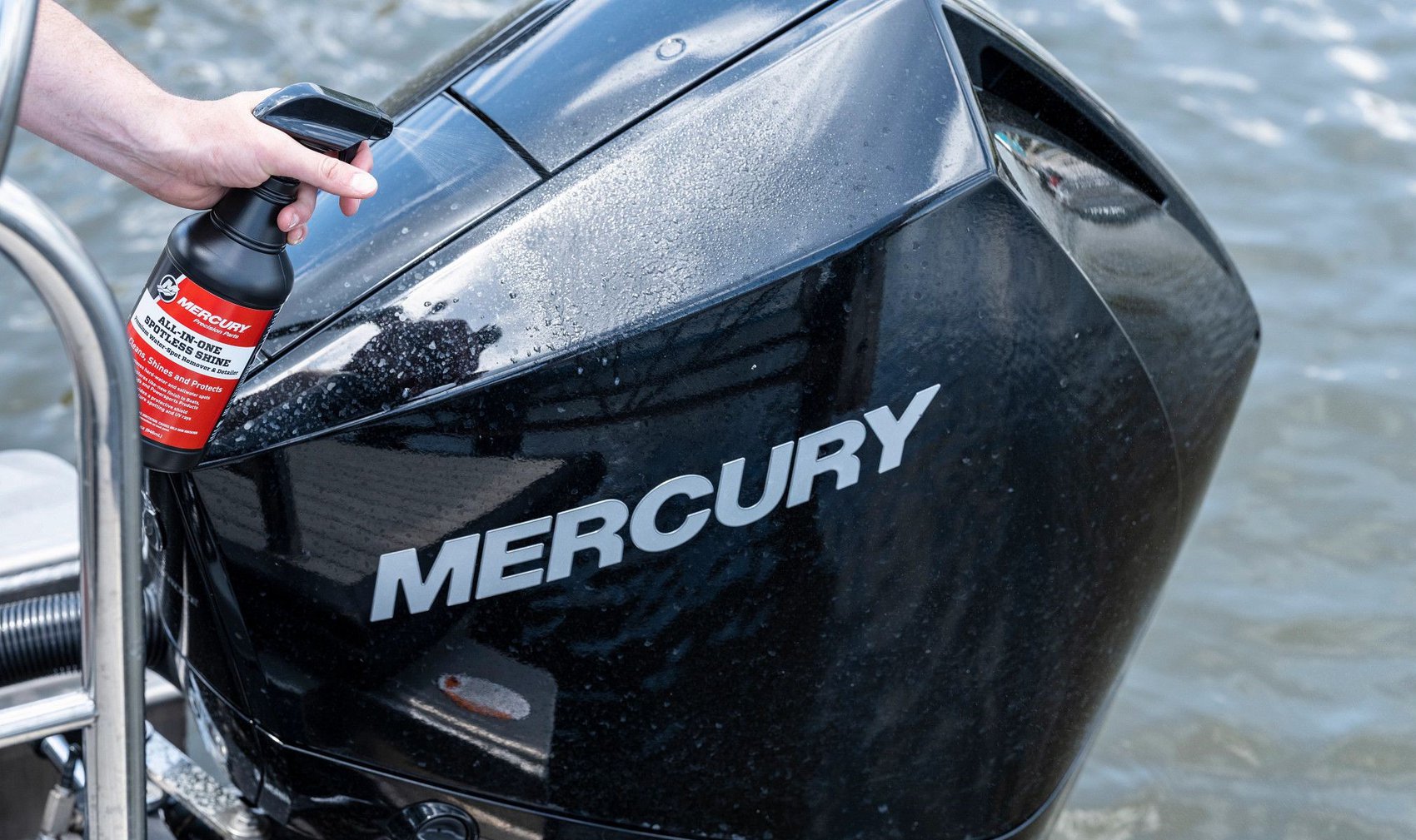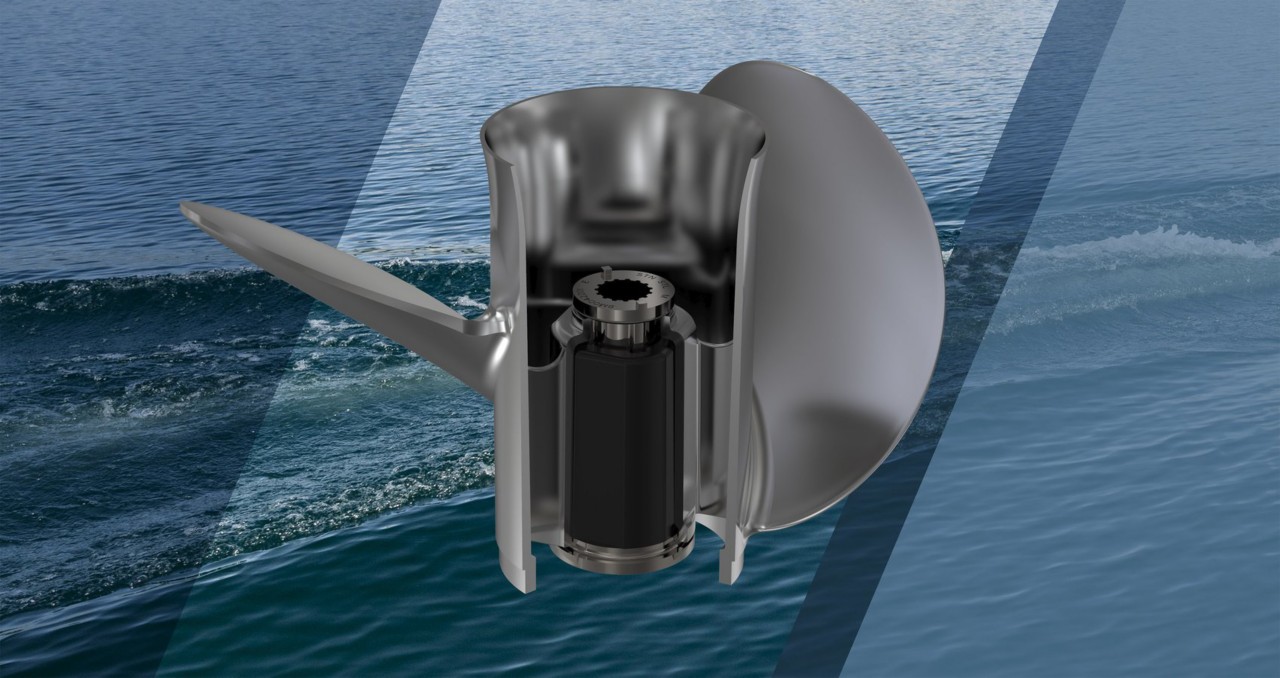It’s time to head back to the dock. You drop the throttle, and your engine revs up like crazy, but your boat doesn’t move. Or maybe it moves very little, almost like there’s no propeller on the engine. You shut down the engine and tilt the drive up to check, and, yes, the prop is still there. So what’s going on?
You could have a “spun” propeller hub. In other words, the propeller is no longer being turned by the engine because the hub has failed.
To understand the problem, let’s first define some terms. The hub of a propeller is within the barrel, which is the cylinder that supports the prop blades. The hub is the interface between the propeller and the propeller shaft of either an outboard or a sterndrive engine. A splined metal insert at the center of the hub mates to the splines on the propeller shaft. Between this insert and the inside of the barrel is a cushioning device. On older propellers, and on current Mercury propellers for motors 30hp and less, this cushion is a rubber-like sleeve that is pressed into the prop barrel and held in place by its own tension. Most Mercury propellers made since 1995 utilize a version of the Flo-Torq shock-absorbing hub, an assembly that slips into the prop barrel.
The function of either style of hub is to cushion the interface between the propeller and the propeller shaft. This reduces shock on the gearcase parts when the drive is shifted from neutral into forward or reverse gear, and, most importantly, it protects the drive train from damage if the propeller strikes hard bottom or a solid object. In fact, on severe impact the hub is intended to give way. This could destroy the hub, but it protects the prop shaft and lower-unit gears. In the case of a strike that severe, the prop is likely damaged anyway. And those gears and shafts are expensive to replace.
On impact, the rubber hub would likely break free from the propeller barrel. If this happens, you are almost certainly going to need to replace the prop with your spare to get back underway. The Flo-Torq hub has a cushion of durable Delrin plastic that is designed to give way on impact. If the prop blades are not too badly damaged you could get underway after replacing the Flo-Torq hub components in the field. This is why it’s important to carry a spare propeller and, if your prop has a Flo-Torq hub, a spare hub assembly, plus the tools and fasteners required to replace the prop.
There are instances when the prop hub can become “spun” without impact. Older-style rubber hubs can become hard with age and begin to slip within the barrel, until they eventually are no longer firmly bonded to the prop. Exhaust heat can also deteriorate the rubber or Delrin material. In this case, the spun hub could be a warning of a bigger problem, such as a worn or failed water pump impeller, a clogged cooling system or an engine that is not running correctly. Each of these situations can cause the exhaust temperature to get very high.
Even if the hub is slipping when you try to plane the boat, it might still have enough grip on the prop to function at idle or slow speed, in which case you could limp home without changing the prop. Then have an authorized Mercury dealer diagnose the problem by inspecting the prop and, if the failure seems to be heat-related, checking the engine for other issues.
If your engine can’t plane the boat, don’t automatically assume the problem is a spun hub. The engine could be down on power for some reason, or there could be an issue with the hydraulic trim system that is not allowing the outdrive or outboard to trim all the way down so that it can easily lift the boat on plane.
Mercury is constantly evolving its prop hub technology to better protect the drive train and to deliver a more pleasant and sophisticated boating experience. The latest evolution in the Flo-Torq system is the new Flo-Torq SSR prop hub kit, which was designed for use with 40hp to 225hp Mercury outboards with a 1-inch prop shaft for general-purpose, non-surface-piercing applications. Flo-Torq SSR utilizes proven Soft-Shift Rubber technology to virtually eliminate shift clunk – the noise created when freeplay in the drive train is taken up when shifting into gear. The Flo-Torq SSR hub system, which can be installed by boat owners in most Mercury propellers, is available now from authorized Mercury dealers, who can also offer expert advice on the complete line of Mercury props and other Flo-Torq system options.
To learn more about which hub kit is right for your boat, click here.




